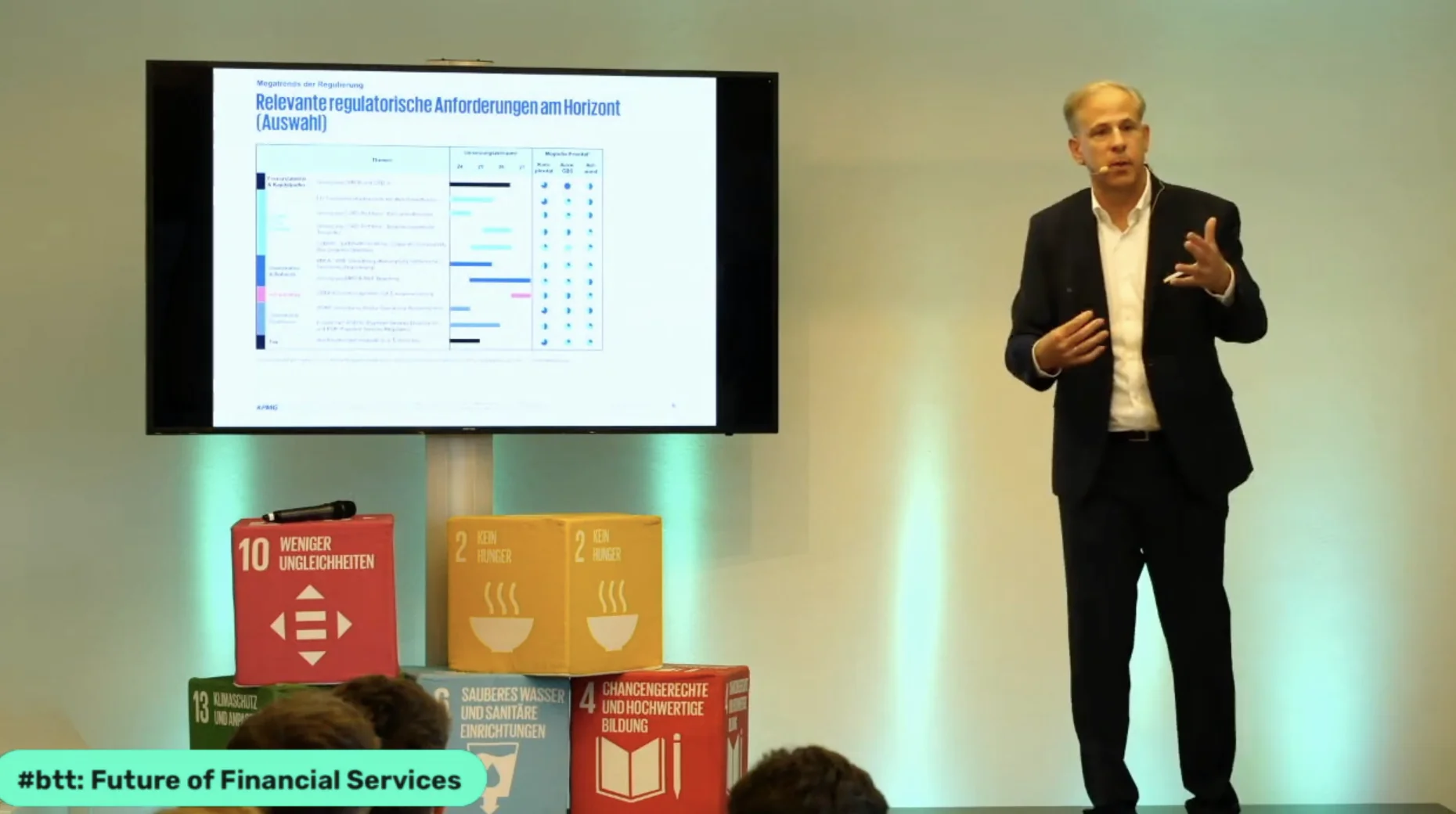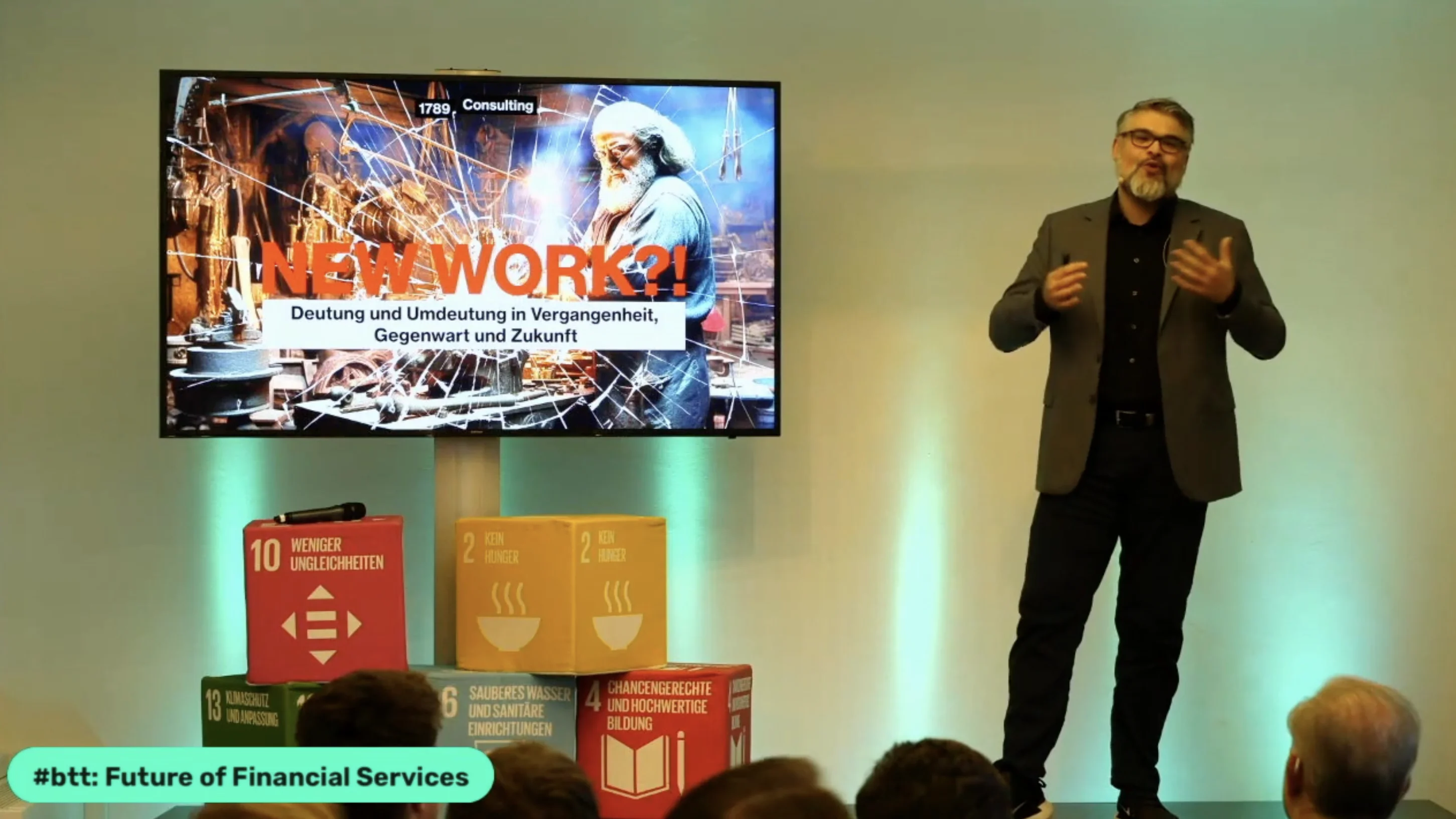The world of finance is transforming. Digitalization, AI and strict regulations are shaping the industry, while new work concepts such as agile project management and New Work are becoming increasingly important. Companies must adapt and find innovative, digital solutions in order to remain competitive and withstand the finance transformation. In the following articles from our monthly after-work series “Between the Towers”, you can find out how these trends are influencing the finance function and what strategic measures companies and their CFOs are pursuing to create a roadmap for the future.
Regulatory megatrends in finance transformation: an obstacle to innovation | Thilo Kasprowicz (KPMG)

In the first presentation of the evening, Thilo Kasprowicz shed light on the regulations that companies currently have to deal with. His findings on the topic of “Megatrends in regulation” were clear: yes, there is a lot that is being regulated. And from several sides, on the one hand at European level by the ECB and the European Banking Authority (EBA) and also by BaFin in Germany.
Especially in the focus of regulation:
1) ESG and sustainable financial services
2) Maintaining financial resilience
3) Strengthening operational resilience
4) Improving customer protection. The last three points mainly arose from the banking crisis at the end of the 2000s and have made financial supervisors even more risk-averse.
In this video, you can find out which specific regulatory provisions will be relevant to finance in the coming years and what impact controlling will have on companies:
Digitalization of asset management - Fax the roadmap? | Anna Lena Giersbach (zeb consulting)

Asset management is seen by many banks as a future growth area. However, the last few years have shown this: Costs are rising at least as fast as income, so the business is not super scalable in its current form. In many cases, the main reason for this is the lack of digitization on the part of providers, who still see this as a risk. Yes, the good old fax certainly still has its place here in many cases and can save money.
Automation of processes, data and technologies – Anna Lena Giersbach repeatedly identifies these three areas as problem areas in her day-to-day work. A number of steps need to be taken before complete digitalization can be achieved, often in parallel along the thematic areas, but in many cases not simultaneously.
Watch the video to find out how successful digitalization can be achieved and when it is best to use a greenfield or brownfield approach:
Would you like to be part of our next “Between the Towers”? Then we look forward to meeting you! Every first Tuesday of the month, we talk about all the topics that move the finance and tech scene. For each edition, we invite experts from the industry and discuss a focus topic. Afterwards, there is plenty of opportunity to network over snacks and drinks. Participation is of course free of charge.
What NEW WORK is...and what it isn't | Patrick Breitenbach (1789 Consulting)

Almost 100 years ago, the social philosopher and anthropologist Frithjof Bergmann (1930-2021) formulated points that he saw as components of a modern working world and agility:
- Radical reduction of wage labor
- for“workflows that you really really want”
- New economic model as an efficient prerequisite
- Moving away from mass production and consumption
- “Smart fabs” & digitalizationCommunal, collective self-sufficiency
It doesn’t even look that different from today’s ideas of New Work. Except for the new economic model, which hasn’t really caught on and will be difficult. So what is New Work and how does its implementation work? Patrick Breitenbach provided answers to this question in his presentation.
One of many exciting insights: The goals of an organization and the managers and members of the organization do not differ in many cases. Or to put it another way: the “what” is largely identical. It is the “how” that is negotiated differently and is the success factor for many companies. The implementation of new technologies in the finance area to optimize the workflow efficiently and effectively is an important topic for many.
In this video, Patrick explains how to achieve an alignment of “what” and “how” as a company and create transparency:
Would you like to be part of our next “Between the Towers”? Then we look forward to meeting you! Every first Tuesday of the month, we talk about all the topics that move the finance and tech scene. For each edition, we invite experts from the industry and discuss a focus topic. Afterwards, there is plenty of opportunity to network over snacks and drinks. Participation is of course free of charge.
Find out more about finance transformation and digitalization here!




